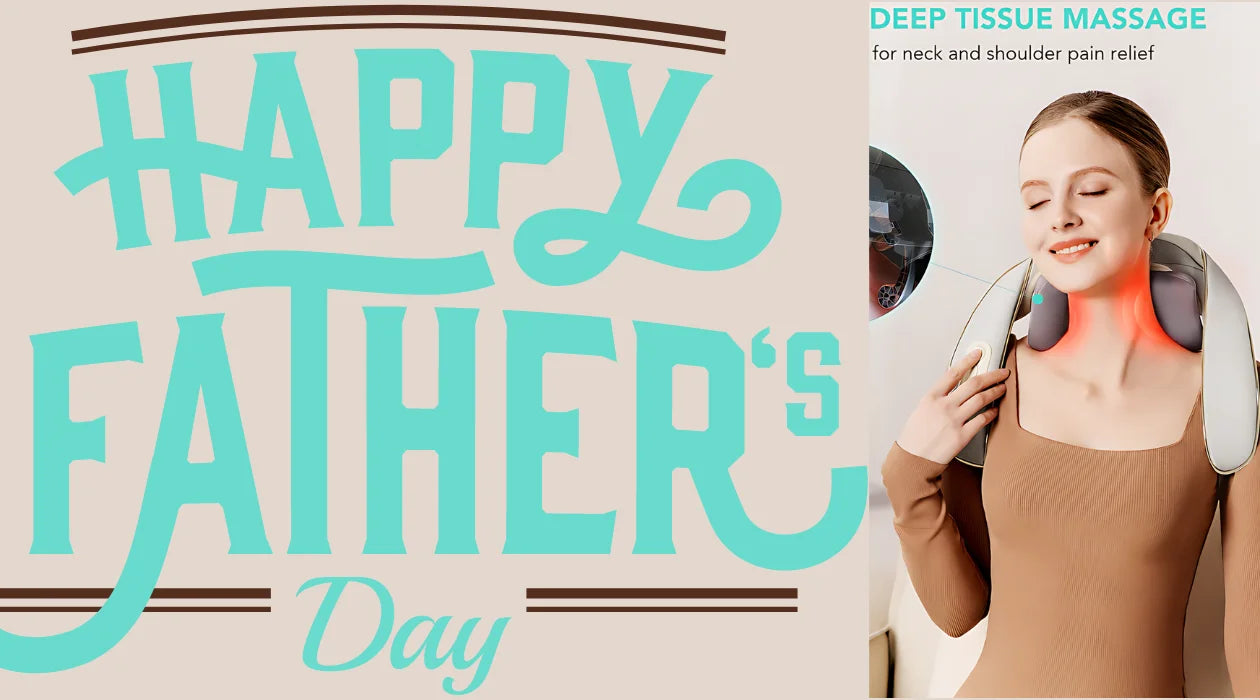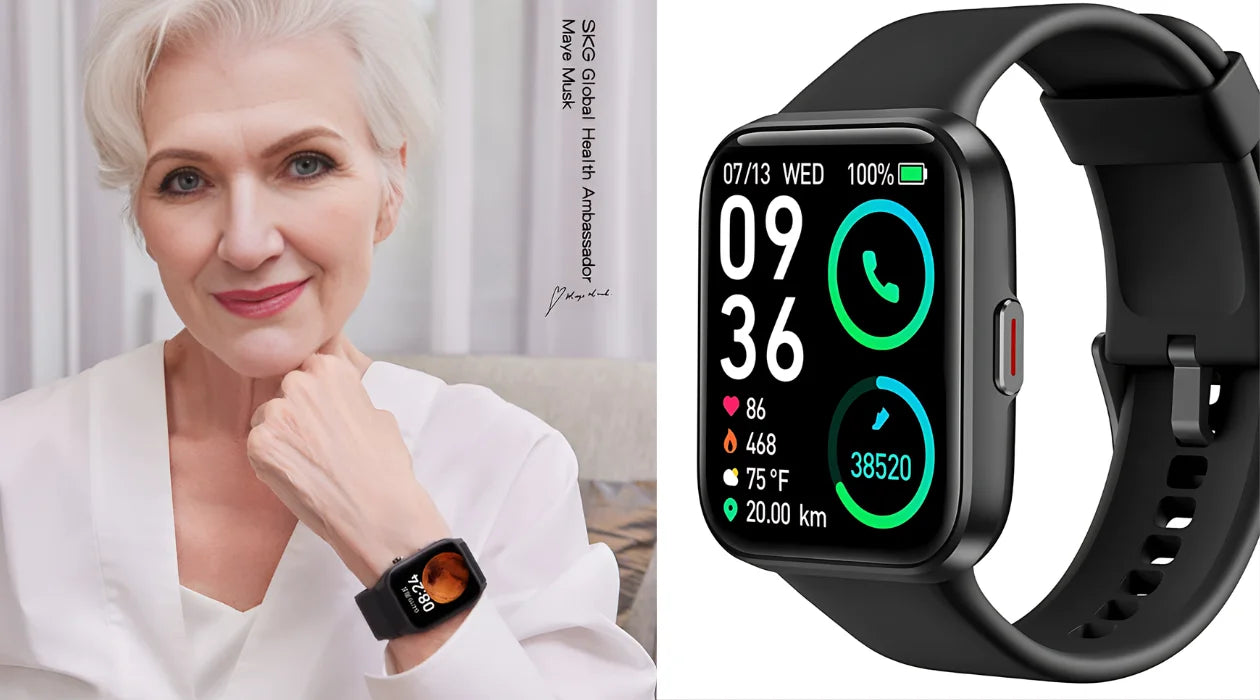Lower back pain is a common condition that affects millions of people worldwide. Poor posture, injuries, repetitive strain, or arthritis and degenerative disc disease may all be the cause of your lower back pain. Fortunately, there are many ways to relieve and improve it. This article introduces several methods for your reference.
1. Massage Therapy
Massage therapy can help relax and reduce inflammation, improve mobility, stimulate the body to produce endorphins (a natural pain-relieving chemical), release emotions, and naturally reduce pain.
Massage Types
Deep Tissue Massage: This method targets deep muscles and connective tissues and is ideal for recovering from injury or chronic muscle tension. It uses slow strokes and deep pressure to stimulate blood circulation and speed up the healing of injured or inflamed areas.
If you want to learn more about the types of massage.
If you don't have time to go to a professional masseuse for a massage or want to enjoy a massage at home, you can try a massager.
I recommend SKG's W9 Pro Lower Back Massager, which has 9 pulse massage modes, 14 massage techniques, and 8 vibrating massage heads. It can be controlled by a smart app to meet different massage needs, while also being portable and invisible.

2. Apply Heat and Cold
Heat and cold therapy are simple and effective ways to treat lower back pain, each with different uses and suitable for different stages of pain and injury.
Using Heat Therapy
Heat therapy relaxes and soothes stiff muscles and promotes the healing of damaged tissue. Increasing blood flow to the area brings more nutrients and oxygen.
- Heating Pads: Electric heating pads are adjustable to different temperatures and are easy to use. Place the heat pad on your lower back for 15-20 minutes while relaxing in a comfortable position.
- Hot water Bottle: Traditional and effective, hot water bottles provide deep penetrating moist heat. Wrap the hot water bottle in a towel to avoid burns and apply to the affected area.
- Heating Gel Packs: Microwavable gel packs provide a convenient option for heat therapy. Make sure the temperature is not too hot to prevent skin damage.
- Warm Bath: Soaking in warm water can relax your whole body and significantly relieve tension in your lower back. Adding Epsom salts can further reduce muscle soreness due to its high magnesium content.
Using Cold Therapy
Cold therapy is effective in reducing inflammation and numbing severe pain. By constricting blood vessels, it slows blood flow to the injured area, reducing swelling and fluid accumulation around the wound.
- Ice Packs: A quick and easy way to apply cold therapy. Cover an ice pack or frozen gel pack with a cloth to protect the skin and apply it to the affected area for 15-20 minutes.
- Cold Packs: These are specially designed cold therapy products with high cold capacity and slow, even cold release. They last a long time.
Monitor your skin and sensation carefully to prevent frostbite. Always place a cloth or towel between the ice pack and the skin, and limit cold application to 15-20 minutes to avoid frostbite of nerves, tissue, or skin.
3. Improve Posture
Good posture can prevent back pain ensure proper spine alignment and reduce muscle stress.
Tips to Improve Posture
- When Sitting: Use a chair or lumbar pillow to support your lower back and align your eyes with the screen. Take frequent breaks to stretch or walk around.
- When Standing: Keep your head above your body, shoulders back, and abs engaged. Wear supportive shoes and shift your weight frequently.
- When Walking: Look forward and let your arms swing naturally. Step with your heels first, then your toes.
- When Sleeping: Use a supportive mattress and pillow. Side sleepers can place a pillow between their knees to keep their hips aligned.
Ergonomic Equipment
If your job requires you to sit for long periods of time, you need to choose an ergonomic chair to help improve your posture.
- Adjustable Chair: Adjust your desk chair so that your arms are at a 90-degree angle while typing. Make sure the chair provides good lumbar support.
- Adjustable Monitor: Keep your monitor at arm's length, with the top no higher than eye level, to prevent neck strain.
4. Regular Exercise
Regular exercise can strengthen your back muscles and relieve pressure on your spine. Here are some detailed exercises that you can incorporate into your daily routine.
Core Strength Exercises
- Plank: Get into a push-up position, but instead of extending your arms, place your forearms and toes on the floor. Hold this position, keeping your body in a straight line from head to toe and not letting your hips sag.
- Bird Dog: Start on all fours, making sure your hands are directly under your shoulders and your knees are under your hips. Extend your right arm forward and your left leg back, maintaining balance and a straight posture. Hold for a few seconds, then switch to the other arm and leg. This exercise strengthens balance and stability in your core and lower back.
- Pelvic Tilt: Lie on your back with your knees bent and your feet flat on the floor. Gently contract your abdominal muscles and tilt your pelvis slightly upward, keeping your lower back flat on the floor. Hold this position for a few seconds, then relax. Pelvic Tilt helps strengthen the lower abdominal muscles that support your lower back.
Flexibility Exercises
- Yoga: Yoga includes a variety of poses that improve flexibility, strength, and balance. Poses such as the cat-cow stretch involve gently arching the backup and down, which can help increase flexibility and relieve tension in the lower back.
- Pilates: Pilates focuses on small movements that work the core muscles. Exercises such as pelvic curls and spinal stretches are especially beneficial for people with lower back pain because they build core strength and improve spinal alignment.
Low-Impact Aerobic Exercises
- Swimming: The buoyancy of the water means less pressure on the back, making swimming a perfect exercise for relieving lower back pain. The backstroke and freestyle are especially good because they involve little twisting of the spine.
- Cycling: Cycling is another low-impact aerobic exercise that works the legs and lower back without putting too much stress on the spine. Make sure your bike is set up properly to avoid leaning too far forward or backward.
- Walking: Walking is a simple and effective exercise that can be easily incorporated into your daily routine. It helps strengthen the muscles that keep the body upright and improves spinal stability.
If you have severe back problems, consult a healthcare provider before starting a new exercise regimen.

5. Physical Therapy
Specialized therapists tailor programs to address specific pain and mobility issues, focusing on personalized exercise planning and maximizing results. Ensure exercise safety.
Treatments
- Ultrasound Therapy: Sound waves deliver deep heat to tissues, helping to relax muscles and speed healing.
- Traction: Spinal traction gently stretches the spine, relieving disc pressure and improving joint mobility.
- Electrical Stimulation: TENS therapy uses electrical current to numb painful nerves around the lower back.
6. Over-the-Counter Pain Relievers
Effective Medications
Nonsteroidal anti-inflammatory drugs (NSAIDs), such as ibuprofen, naproxen, and aspirin, are commonly used to relieve pain and reduce inflammation. They work by blocking substances in the body that cause inflammation and pain. Consult a healthcare professional to choose the most appropriate NSAID and determine the correct dosage.
- Ibuprofen: Fast-acting, effective for treating a variety of pains, such as muscle pain, joint pain, and chronic pain.
- Naproxen: Provides longer-lasting pain relief, ideal for situations that require ongoing treatment.
- Aspirin: Has pain-relieving and anti-clotting properties.
Usage and Precautions
- Dosage: Follow recommended doses to avoid side effects.
- Pre-existing Conditions: Use with caution in patients with medical conditions such as ulcers, heart disease, or kidney problems.
- Alcohol: Avoid alcohol to reduce the risk of ulcers and liver problems.
- Take With Food: Take with food or milk to reduce stomach irritation.
- Monitoring: Long-term use requires regular checkups.
7. Proper Sleep Support
Poor sleeping posture can also cause pain, especially for people with lower back pain.
Sleeping Posture: Make sure your spine is in a neutral position to avoid poor sleeping posture. Sleeping on your back is the best posture, and you can choose a contour pillow to support your neck. If you sleep on your side, you can choose a thicker pillow to adjust your neck and spine. Please switch sides regularly to maintain balance and reduce pressure. You can also use a cervical pillow to help improve your sleeping posture.
Mattresses are also one of the factors that affect sleep. Using a medium-hard mattress allows the spine to maintain its natural curve. It provides balanced hardness and cushioning, evenly distributes weight, and reduces pressure points. It can prevent the lower back from sinking too deep and reduce spinal pressure.
Summarize
By incorporating these methods into your daily life and making simple lifestyle changes, you can find relief from lower back pain. Before beginning a new exercise program, always consult a healthcare professional to ensure that the program is safe and appropriate for your specific situation.




